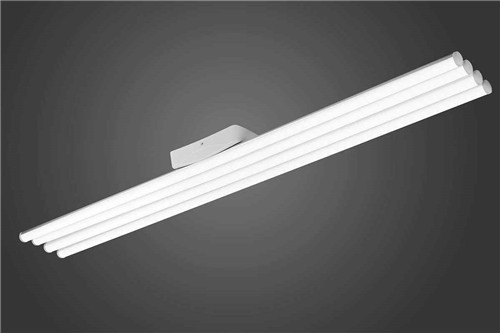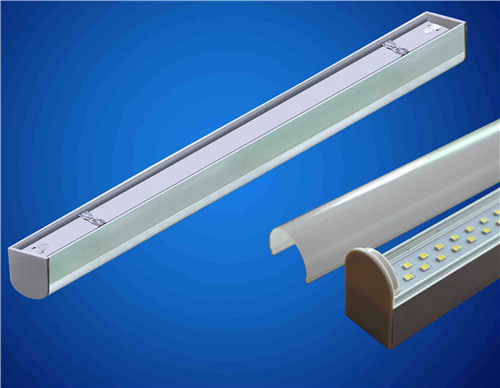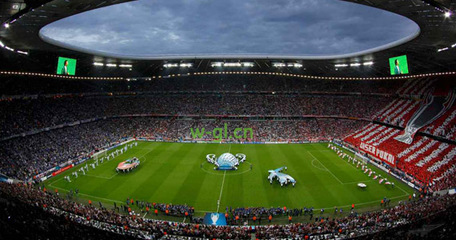A Brief History of the Development of Electric Light Sources
Electric light source is a device or device that converts electrical energy into light energy. It is widely used in daily lighting, industrial and agricultural production, national defense and scientific research.
Brief History
Human research on electric light sources began at the end of the 18th century.
In the early 19th century, British H. David invented the carbon arc lamp.
In 1879, T.A. Edison of the United States invented the carbon filament incandescent lamp with practical value, which made human beings enter the era of electric lighting from the long period of fire lighting.
In 1907, drawn tungsten wire was used as the incandescent body.
In 1912, I. Langmuir and others in the United States conducted research on gas-filled incandescent lamps, which improved the luminous efficiency and life of incandescent lamps, and expanded the application range of incandescent lamps.
In the early 1930s, low-pressure sodium lamps were successfully developed.
In 1938, Europe and the United States developed fluorescent lamps, whose luminous efficiency and lifespan are more than three times that of incandescent lamps, which is a major breakthrough in electric light source technology.
In the 1940s, high-pressure mercury lamps entered a practical stage.
In the late 1950s, halogen tungsten lamps with extremely small volume and light decay came out, which changed the slow progress of thermal radiation light source technology. This is another major breakthrough in electric light source technology.
In the 1960s, metal halide lamps and high-pressure sodium lamps were developed, and their luminous efficiency is much higher than that of high-pressure mercury lamps.
In the 1980s, small-diameter compact energy-saving fluorescent lamps, low-power high-pressure sodium lamps and low-power metal halide lamps appeared, making electric light sources enter a new era of miniaturization, energy saving and electronization.
Advantages of electric light source
The invention of electric light sources facilitated the construction of electrical installations. The electric light source has high conversion efficiency, stable power supply, convenient control and use, safety and reliability, and can easily count energy consumption with an instrument. Therefore, in the more than 100 years after its advent, it has quickly gained popularity. It has not only become a necessity of human daily life, but also plays an important role in industry, agriculture, transportation, as well as national defense and scientific research.
The world’s lighting electricity consumption (lighting light source power consumption) accounts for about 10% to 20% of the total power generation. With the acceleration of the modernization development of all countries in the world, the electricity consumption for lighting is increasing year by year, and the growth rate of electricity is not suitable. Therefore, the research, development and promotion of energy-saving electric light sources have attracted great attention.
Classification of Electric Light Sources
Classified by lighting purpose
Electric light sources can generally be divided into two categories: illumination light sources and radiation light sources. The illumination light source is an electric light source that radiates the visible spectrum (wavelength 380-780 nanometers) mainly for human vision for the purpose of illumination. It is available in a wide variety of specifications, ranging from 0.1 watts to 20 kilowatts. The output accounts for more than 95% of the total output of electric light sources.
The radiation light source is an electric light source that can radiate a large amount of ultraviolet spectrum (1-380 nanometers) and infrared spectrum (780-1×106 nanometers) for the purpose of not lighting. It includes ultraviolet light source, infrared light source and visible light source for non-illumination.
The above two types of light sources are incoherent light sources. In addition, there is a class of coherent light sources, which emit light through excited state particles under the action of stimulated radiation, and the output light wavelengths range from short-wave ultraviolet to far-infrared. This light source is called a laser light source.
Classified by luminous form
There are many types of lighting sources. According to the luminous form, it is divided into three categories: thermal radiation light source, gas discharge light source and electroluminescent light source.
① Thermal radiation light source. A light source that radiates light energy at high temperatures by the flow of electrical current through a conductive object. Including incandescent and tungsten halogen lamps.
② Gas discharge light source. A light source that emits light by flowing an electric current through a gas or metal vapor to produce a gas discharge. There are two types of gas discharge, arc discharge and glow discharge, and three types of discharge voltage: low pressure, high pressure and ultra-high pressure.
Arc discharge light sources include: low-pressure gas discharge lamps such as fluorescent lamps and low-pressure sodium lamps, high-intensity gas discharge lamps such as high-pressure mercury lamps, high-pressure sodium lamps, and metal halide lamps, ultra-high-pressure gas discharge lamps such as ultra-high-pressure mercury lamps, and carbon arc lamps, Gas discharge lamps with a large discharge pressure span, such as xenon lamps and some spectral light sources. Glow discharge light sources include glow indicating light sources utilizing negative glow region glow discharges and neon lights utilizing positive column region glow discharges. Both are low pressure discharge lamps.
③ Electroluminescent light source. A light source that causes solid matter to emit light under the action of an electric field. It converts electrical energy directly into light energy. Including electroluminescence light source and light-emitting diode.
Structure and Performance of Electric Light Source
Different types of electric light sources have different structures, but generally have the following parts: filaments, electrodes, and phosphors as illuminants. Glass, translucent ceramic tube, quartz tube as luminaire housing. As the guide wire, stem and lamp cap of the lead. Various gases, mercury, metals and their halides as fillers. Getter, various coatings, insulating parts and adhesives, etc.
There are 6 main performance indicators of electric light source:
①Light quantity characteristic index. Including total luminous flux, brightness, light intensity, ultraviolet light and thermal radiation.
② light color characteristics index. Including light color, color temperature, color rendering, chromaticity and spectral distribution.
③Electrical characteristic index. Including power consumption, lamp voltage, lamp current, starting characteristics and interference noise.
④ Mechanical properties. Including geometric dimensions, lamp structure and lamp caps, etc.
⑤ economic characteristics. Including luminous efficiency, lifespan, price and electricity bills, etc.
⑥ psychological characteristics. Including light appearance and comfort, etc.
The development trend is mainly to improve the luminous efficiency, develop a small and efficient energy-saving light source, improve the color rendering of the electric light source, and prolong the life. The specific ways to achieve the above goals are to develop new materials, adopt new processes, and further study new light-emitting mechanisms and develop new electric light sources. The most realistic way is to improve the manufacturing technology of the existing electric light source and adopt new production equipment with good automation performance.
Luminous Efficiency
The ability of a luminophore to convert energy absorbed when excited into light energy. It is an important parameter to characterize the function of luminophore. There are three representation methods, namely power efficiency (or energy efficiency), photometric efficiency (or lumen efficiency) and quantum efficiency.
Power efficiency
Power efficiency ηP refers to the ratio of the emission power P0 output by the illuminant to the input excitation power Pi (optical power, electron beam power, electrical injection power, etc.): ηP=P0/Pi. It is a dimensionless percentage less than 1.
Because most luminaires are used for display and illumination, their function is measured by the human eye. But the human eye only perceives visible light, and the sensitivity to different wavelengths is also very different. Therefore, luminaires with different emission spectra, even if they have the same power efficiency, will see different brightness to the human eye. To reflect such a difference, the photometric efficiency η1 can be used. It is the ratio of the luminous flux Ф (in lumens) of the luminous body to the excitation power Pi, η1=φ/Pi, and the unit is lumens/watt.
Conversion of power efficiency and photometric efficiency
Obviously, if the emission spectrum of the luminophore is known, the power efficiency and the photometric efficiency can be converted into each other.
In the basic research on luminophores, especially for photoluminescence and injection electroluminescence, the quantum efficiency ηq is often used to characterize the luminous efficiency. Quantum efficiency refers to the ratio of the number of photons N0 emitted by the light-emitting body to the number of photons absorbed or the number of injected electrons (holes) Ni during excitation:
It is a dimensionless number.
Luminous efficiency can also be divided into external efficiency and internal efficiency. External efficiency only considers the ratio of the output light energy to the light energy or electrical energy thrown to the illuminant, and is the pure conversion efficiency of the absorbed energy into light energy. Input light is lost due to reflection and reabsorption, so the external efficiency is always less (or close to) the internal efficiency. The latter is the real parameter that reflects the energy conversion process.
The size of the luminous efficiency reflects the total effect of the internal energy excitation, energy transfer, composite luminescence and non-radiative recombination process of the luminophore. It is related to the composition of the luminophore, the type and concentration of the luminescent center, the choice of co-activator, the control of harmful impurities (quenching center), the integrity of the luminescent crystal, and even the specific process.





